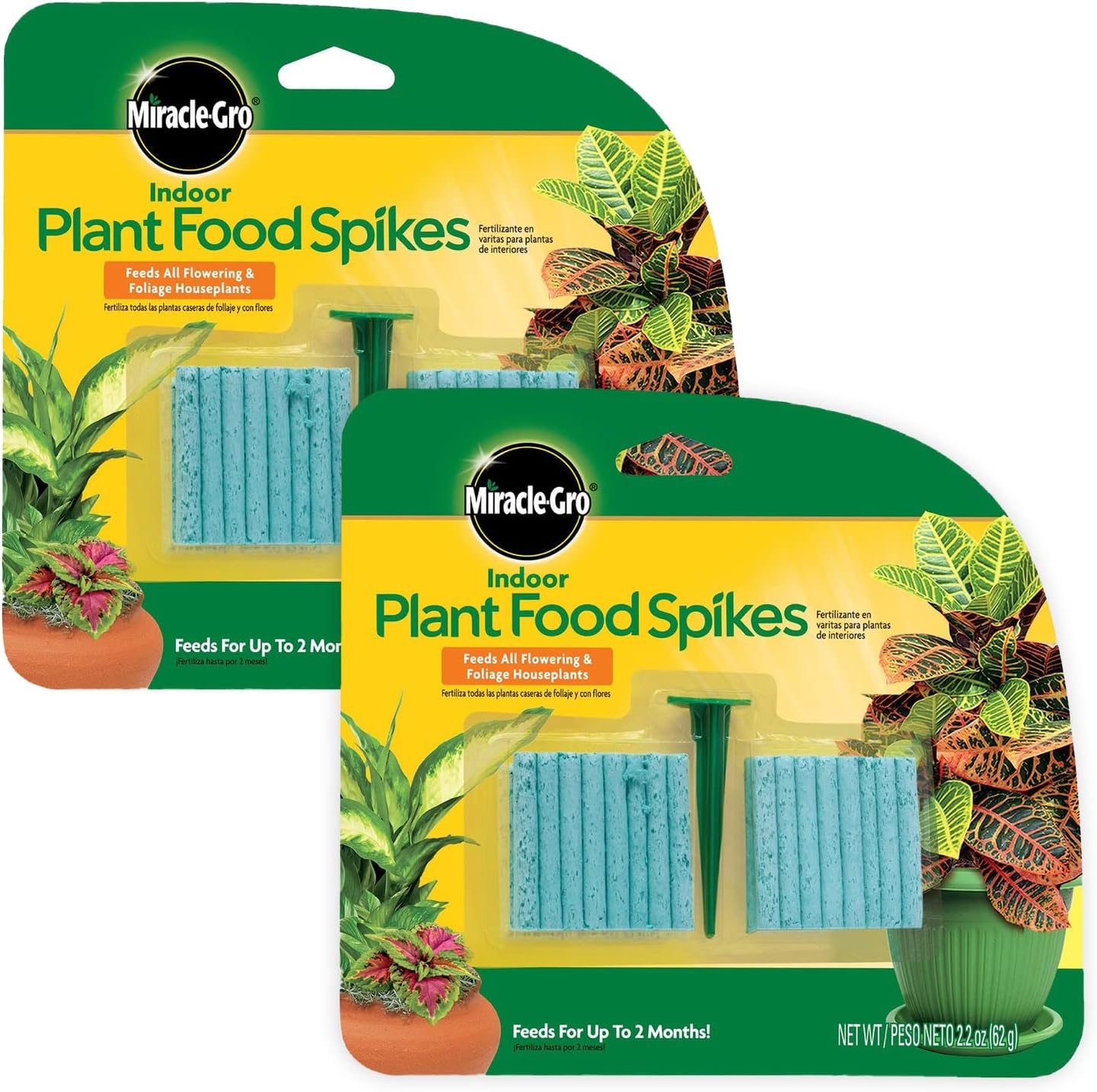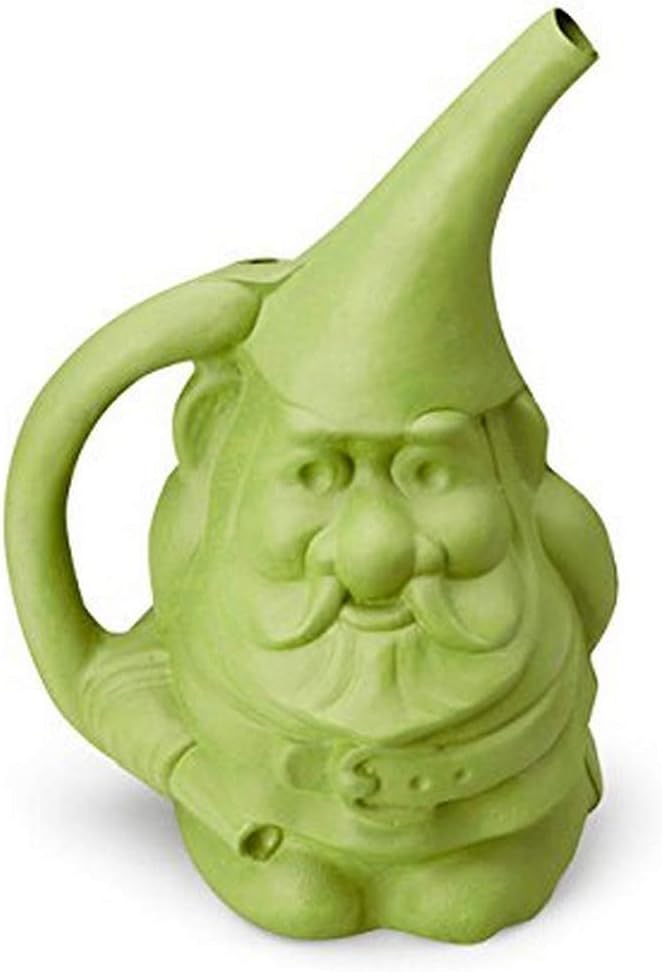The Complete Poinsettia Care Guide: Planting, Pruning & Keeping It Alive
Did you get a poinsettia for the holidays? Wondering how to take care of it? Our comprehensive guide will take you through the basics and beyond.
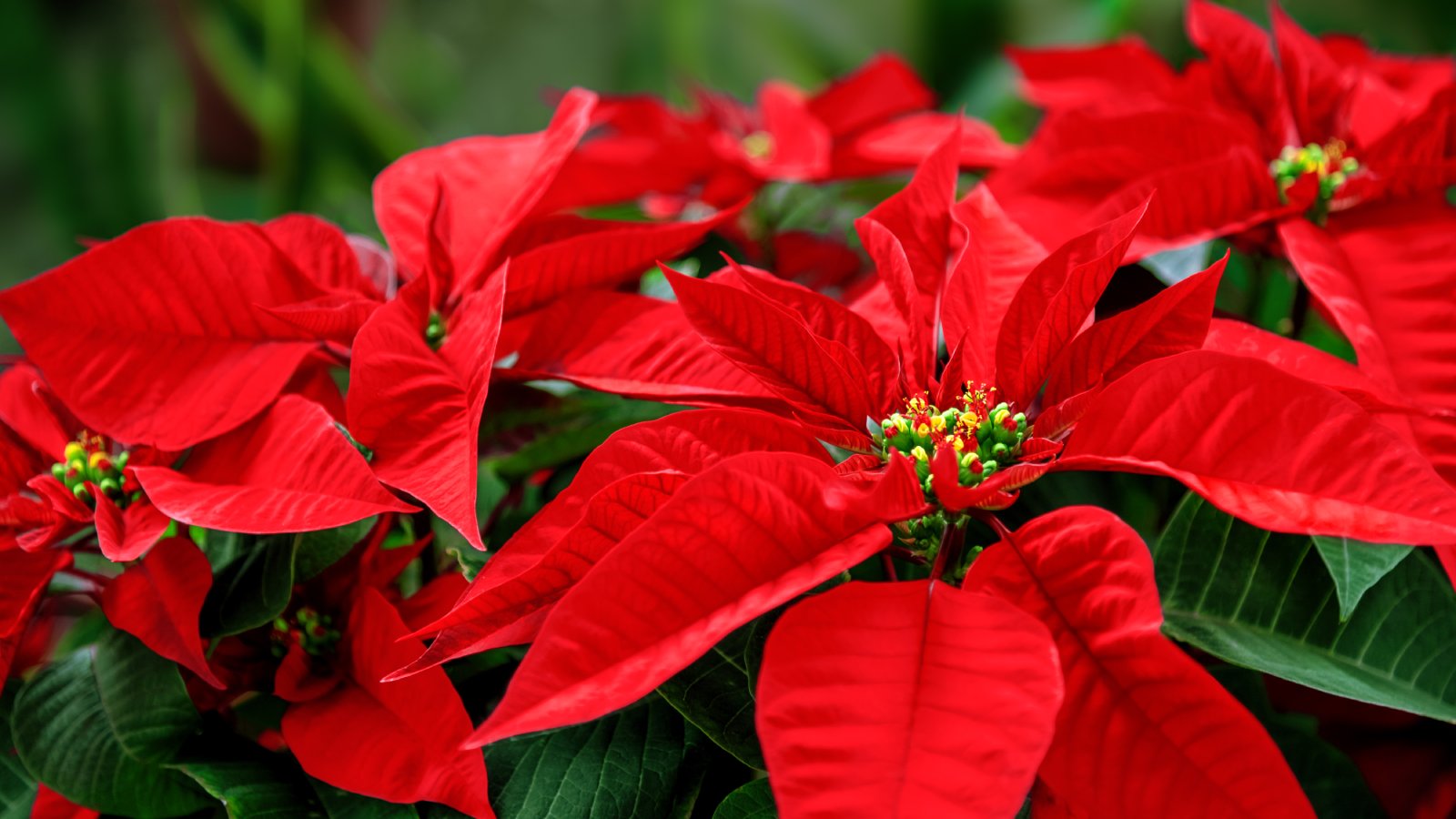
How do you take care of poinsettias? Carefully!
Poinsettia (Euphorbia pulcherrima) is a classic holiday plant, known for its festive red bracts set against green leaves. Keeping it looking pretty through Christmas is one thing. Growing it year round as a houseplant so it can make another appearance in twelve months' time? That takes a little more finesse.
Quick Poinsettia Facts
Botanical name | Euphorbia pulcherrima |
Height | 3-12 feet (0.9-3.5 meters) |
Spread | 3-8 feet (0.9-2.5 meters) |
Light | Partial shade |
Soil | Light, well-drained |
Hardiness | USDA zones 9-11 (Not in the US? Convert your zone) |
Flowers | Winter |
Native range | Mexico and Central America |
Planting a Poinsettia
Poinsettias are native to Mexico and Central America, where the winters are toasty. If you live in a climate warm enough for this tropical native (USDA zones 9-11, you can grow poinsettia outdoors year round. For most of us, however, garden poinsettias are just a pipe dream. Whether you're growing them inside or out, poinsettias' planting requirements are pretty much the same.
Light
If you're planting you poinsettia outside, choose a spot that gets partial shade. Be sure there's ample room for it to grow into a shrubby tree. Potted poinsettias are small, but when left outside to their own devices, they can grow ten feet (3 m) tall, or even higher!
Indoors, put your poinsettia somewhere with bright, indirect light. Avoid harsh, direct sun. Next to a sunny window is ideal.

Water
Watering poinsettia plants is best done regularly. Poinsettias do best with consistent moisture, but they will not tolerate soggy soil, which can lead to root rot. Make sure your poinsettia's pot has drainage holes in the bottom, and get rid of that foil! Lots of holiday potted plants come wrapped in shiny, colorful foil. It might look nice, sure, but it also traps water with nowhere to drain, rotting your plant's roots and striking it down well before its time. Toss the foil, put the pot in a saucer, and let those roots breathe!
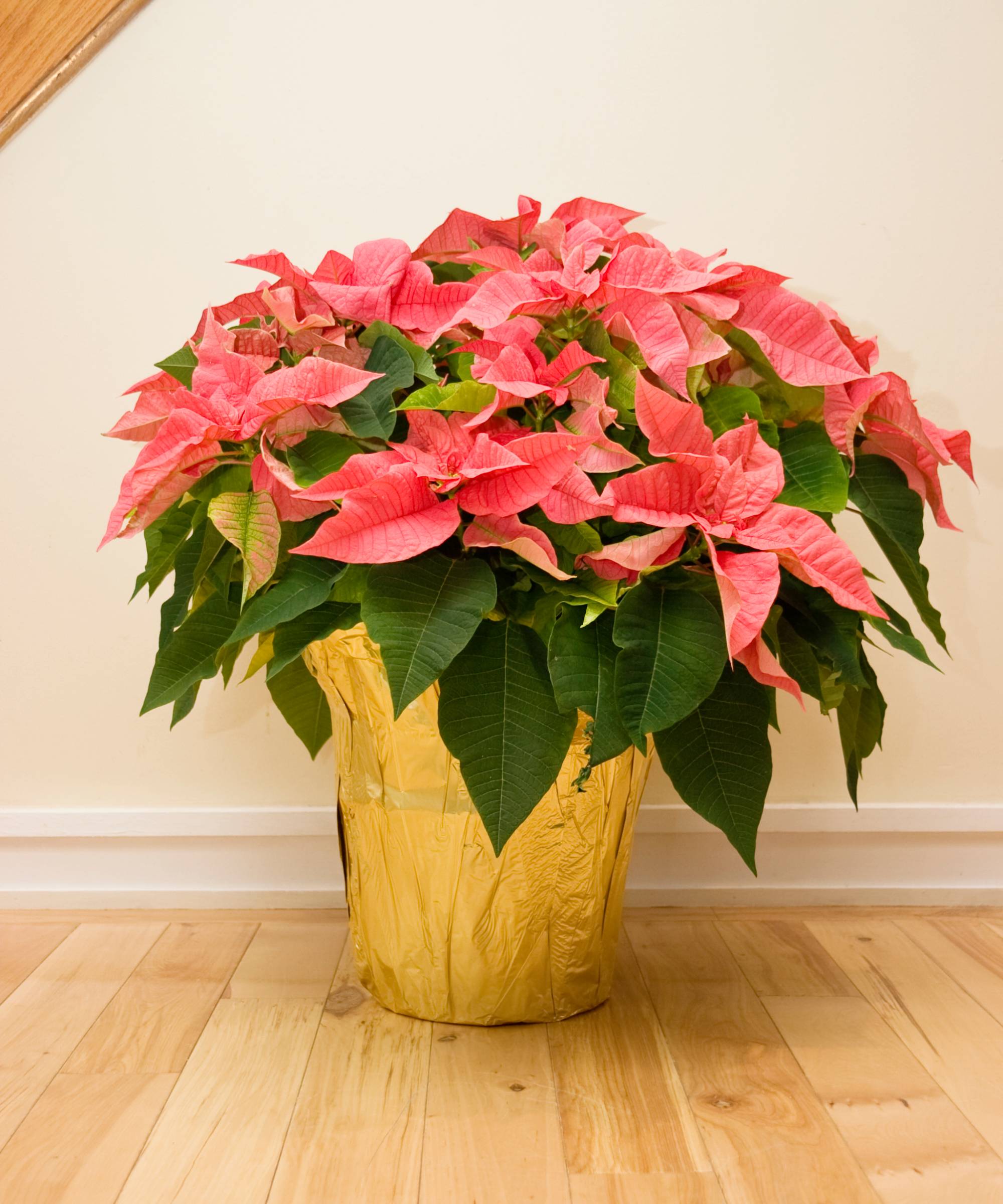
Temperature & Humidity
You can grow poinsettias outside in areas where the temperature rarely drops below 45 F (7 C). Though they're associated with the holidays, poinsettia cold tolerance is actually nil. The ideal temperature range for poinsettia is between 50 and 75 F(10-24 C).
Sign up for the Gardening Know How newsletter today and receive a free copy of our e-book "How to Grow Delicious Tomatoes".
Soil
The best soil for poinsettia is light and drains well. Amend your soil if it is heavy, high in clay, or doesn’t drain readily.
Fertilizer
Use an all-purpose fertilizer with poinsettia. Apply it when you first put it in the ground. Continue to fertilize poinsettias about once a month throughout the growing season.
Pruning

The best time to prune outdoor poinsettia plants is in spring. Shaping it then will encourage the kind of growth you want for the season. Trim off any dead or broken branches and leaves. Trim branches back leaving a few leaves at the base. If you want a small, bushy poinsettia, trim branches aggressively.
Problems, Pests & Diseases
Root rot is one of the most common issues with poinsettia, and it stems from one of the most common poinsettia mistakes: overwatering. Avoid it by ensuring the soil drains and by not watering too much.
Shriveled poinsettia leaves can be caused by anthracnose, scab, Rhizopus, or Rhizoctonia. Poinsettia leaves turning yellow can be due to root rot, over-fertilization, or a mineral deficiency. Poinsettia leaf drop is often due to environmental problems, like temperature, soil type, and lighting.
Pests you might see on your poinsettia include mealybugs, whitefly, scale, and red spider mites.
Broken poinsettia stems can be rooted and, with a little luck, propagated into new plants.
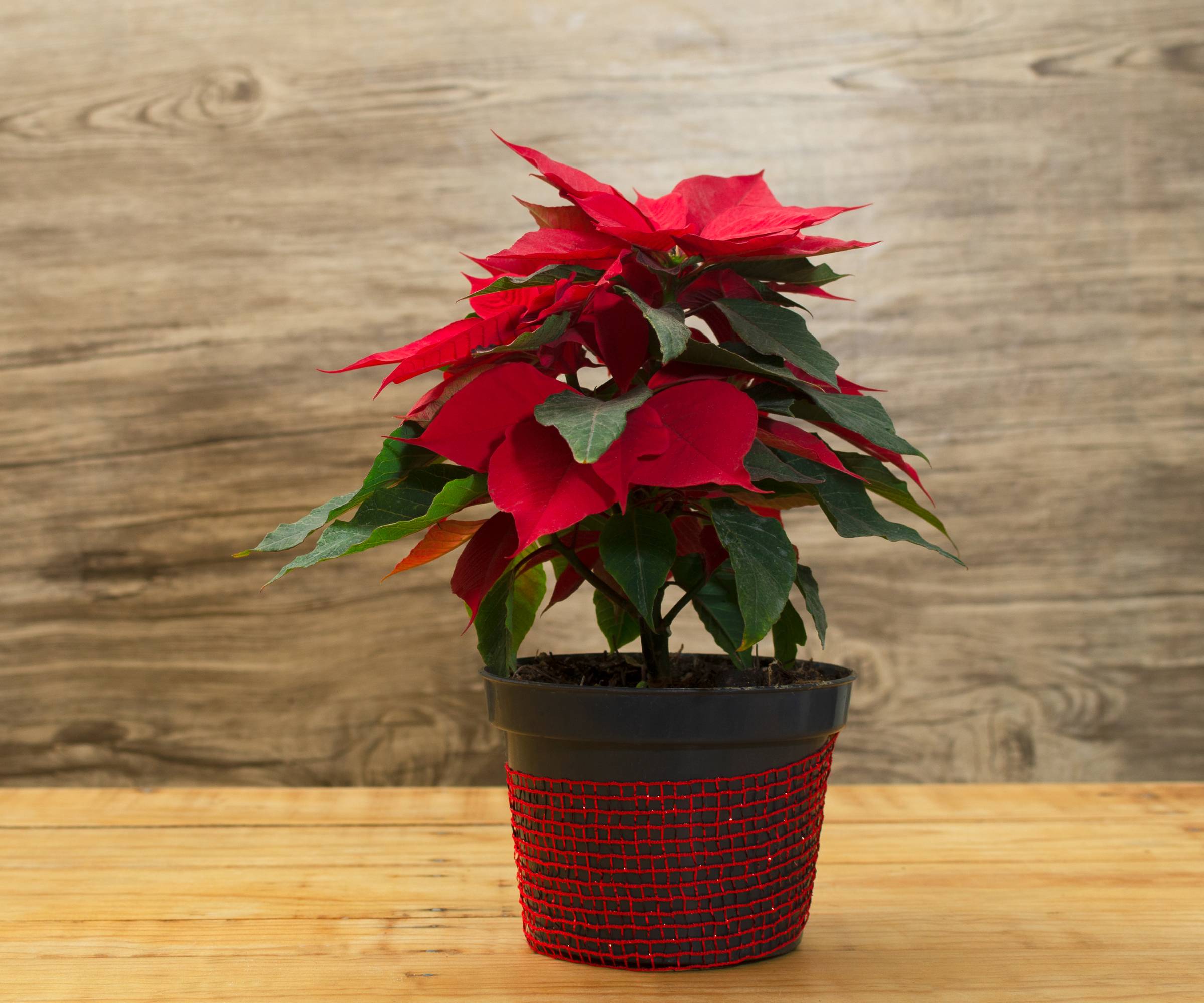
How to Keep a Poinsettia Alive After the Holidays

Most people grow poinsettia as a holiday houseplant and then toss it once it's stopped flowering. Year long poinsettia care is possible, though. Knowing how to take care of it outside of the holiday season is key to getting a poinsettia to rebloom:
- Once the flowers, bracts, and many of the leaves have died and dropped off, reduce watering and let the soil dry completely.
- Store your dormant poinsettia in a dark, cool area of the house, about 50 degrees Fahrenheit (10 Celsius).
- Water infrequently, just enough to prevent the woody growth from shriveling.
- Repot the poinsettia in mid-spring.
- In the new pot, cut the stems back to about six inches (15 cm) above the soil.
- Water the poinsettia very well and set it by a sunny, warm window. Water regularly as the soil dries.
- When new growth appears, begin fertilizing the poinsettia.
- Place the pot outside when temperatures are consistently 50 degrees or higher.
- Bring the poinsettia back inside in late summer or early fall and place it by a sunny window. Continue watering and fertilizing regularly.
Poinsettia flower growth is triggered by long nights. From about October 1, ensure your poinsettia gets 14 hours of darkness per night. Any light during this period will delay flowering. Use a dark room or place a box over the pot.
Propagating Poinsettia
While planting poinsettia seeds is possible, the best method of poinsettia plant propagation is taking stem cuttings. Cut several inches off a stem and remove the lower leaves. For the best results, use a rooting hormone on the cut end and place it in a light soilless potting mix. Keep the cutting in the shade and use a cover to retain moisture. You should have transferable roots in about four weeks.
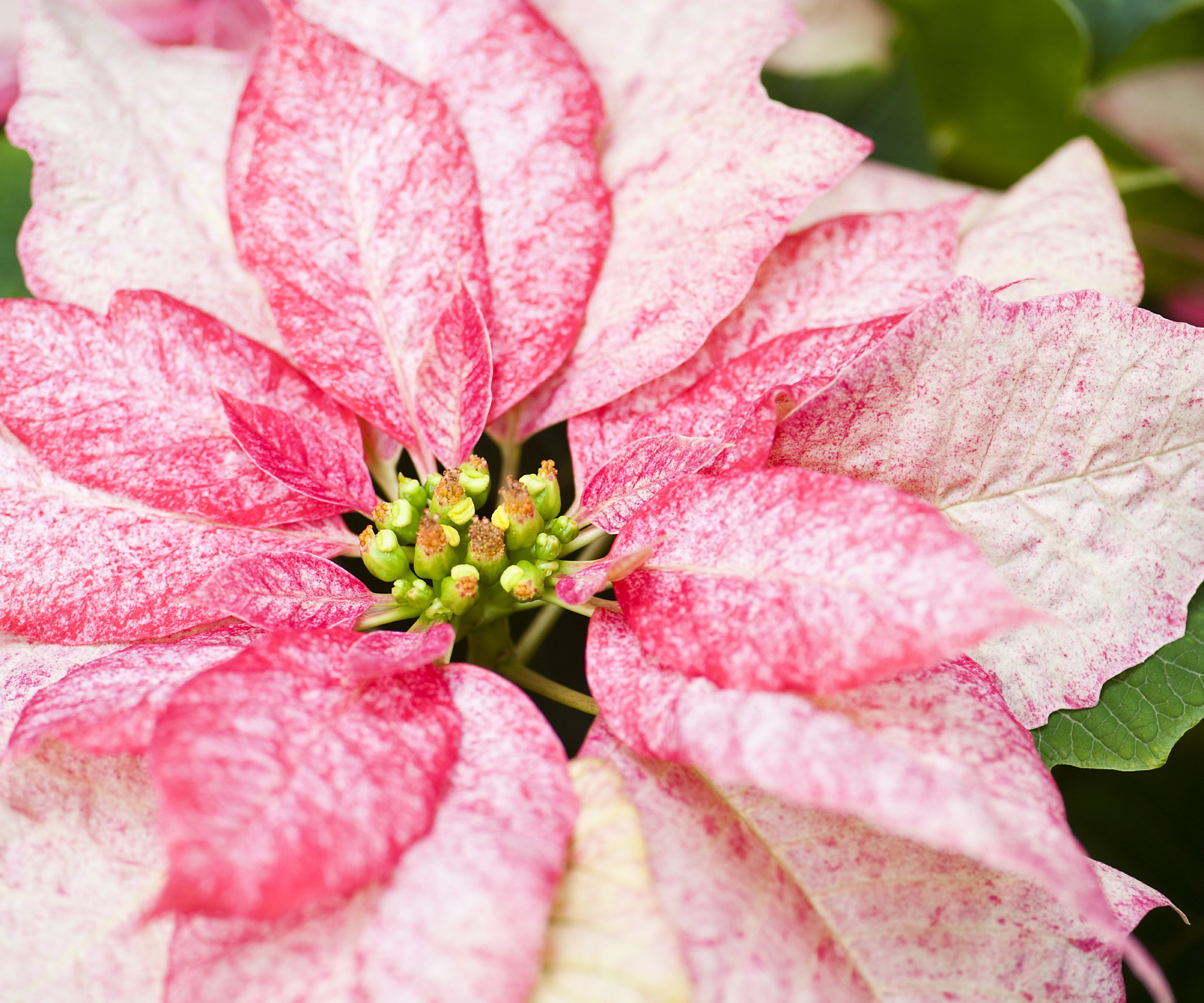
Poinsettia Varieties
Poinsettias are popular, which means there's a big market in developing fun new varieties. While regular old red is the classic, you can also find pink, white, and speckled specimens out there. And the good news? New ones are being created all the time. Here are some pretty types of poinsettia plants to look for:
- Prestige Red is a classic red variety.
- Early Orion Red is a good choice for early Christmas poinsettia decor.
- Ice Punch has bright red bracts and a white center.
- Marco Polo has peachy-colored bracts.
- Mars Pink displays deep pink bracts with yellow flower in the centers.
- Mars White is a great choice for a white variety.
- Sonora White Glitter is a unique variety with white-speckled red bracts.
Are Poinsettias Poisonous?
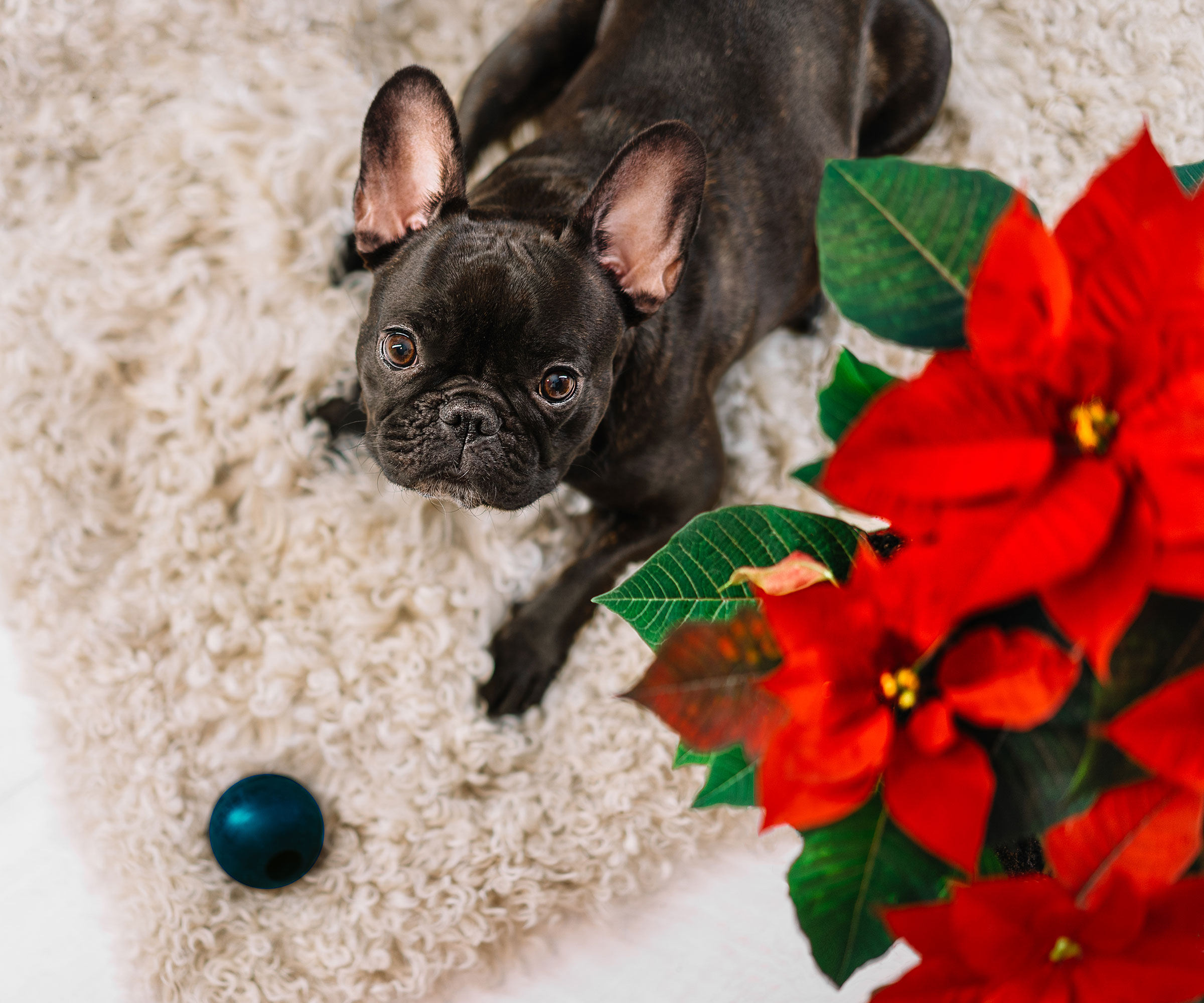
It's virtually impossible to have one of these plants in your home without someone warning you that poinsettias are poisonous. And if you have a pet, the warnings are going to come tenfold. Where did this persistent idea come from? Is it even true?
The fact is that poinsettias are part of the Euphorbia family, which is known for having toxic white sap. While poinsettias also have milky white sap, it's far from deadly, and is mostly just a skin irritant.
If your dog or cat nibbles it, try not to worry, but do keep a close eye on them. That white sap might irritate their stomach, making them drool or even vomit, but chances are it will clear up on its own.
Of course, if your pet has eaten a large amount of poinsettia, or if they're acting strangely or especially unwell, you should take them to the vet.
Click these links to read more about dogs eating poinsettias and cats eating poinsettias.
Poinsettia Care Essentials
Quiz!

The only child of a horticulturist and an English teacher, Liz Baessler was destined to become a gardening editor. She has been with Gardening Know how since 2015, and a Senior Editor since 2020. She holds a BA in English from Brandeis University and an MA in English from the University of Geneva, Switzerland. After years of gardening in containers and community garden plots, she finally has a backyard of her own, which she is systematically filling with vegetables and flowers.
- Mary Ellen EllisWriter
- Amy DraissDigital Community Manager


